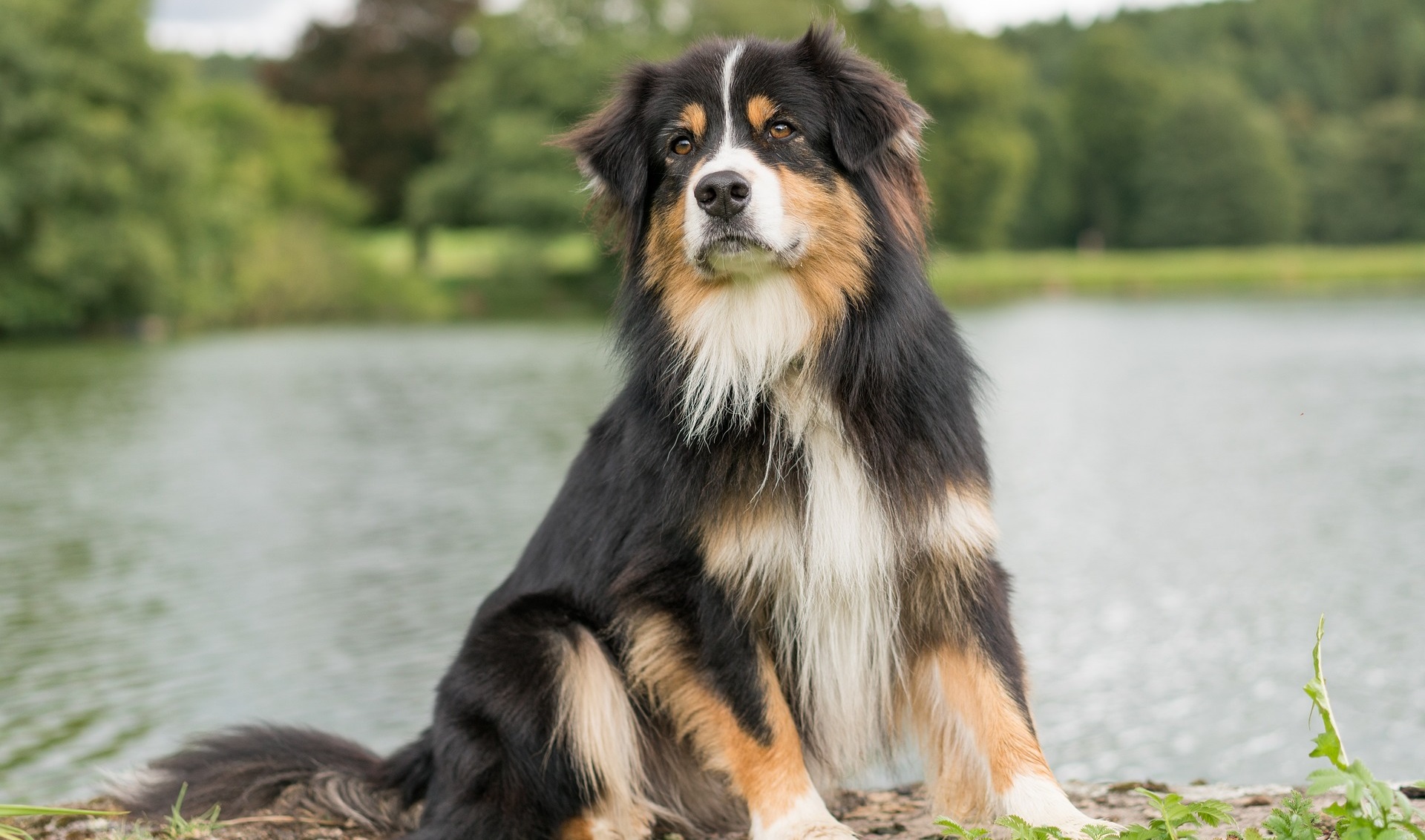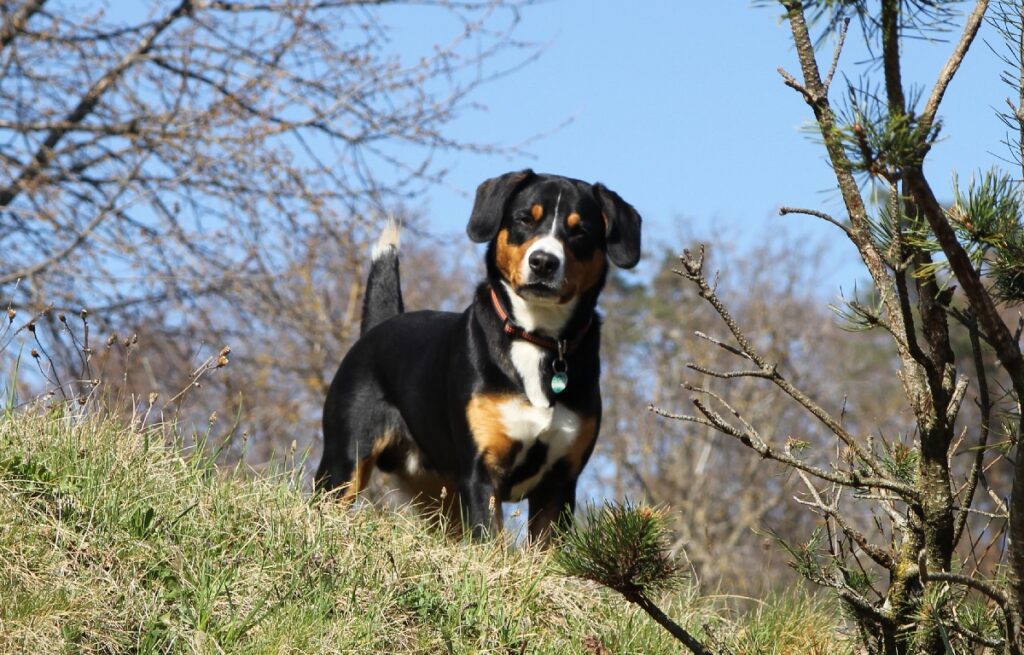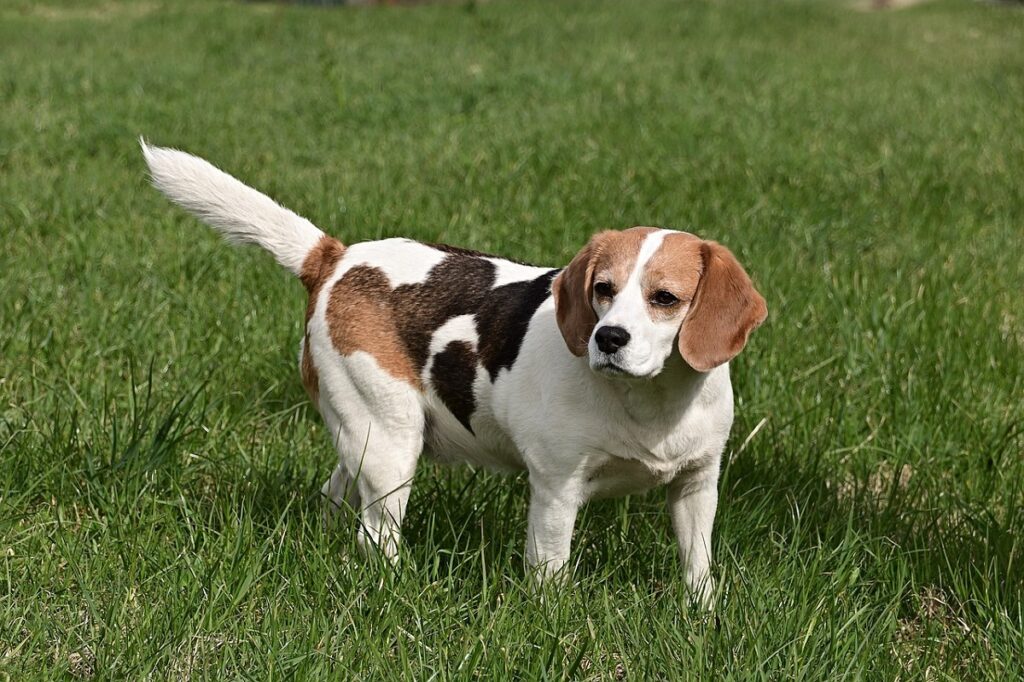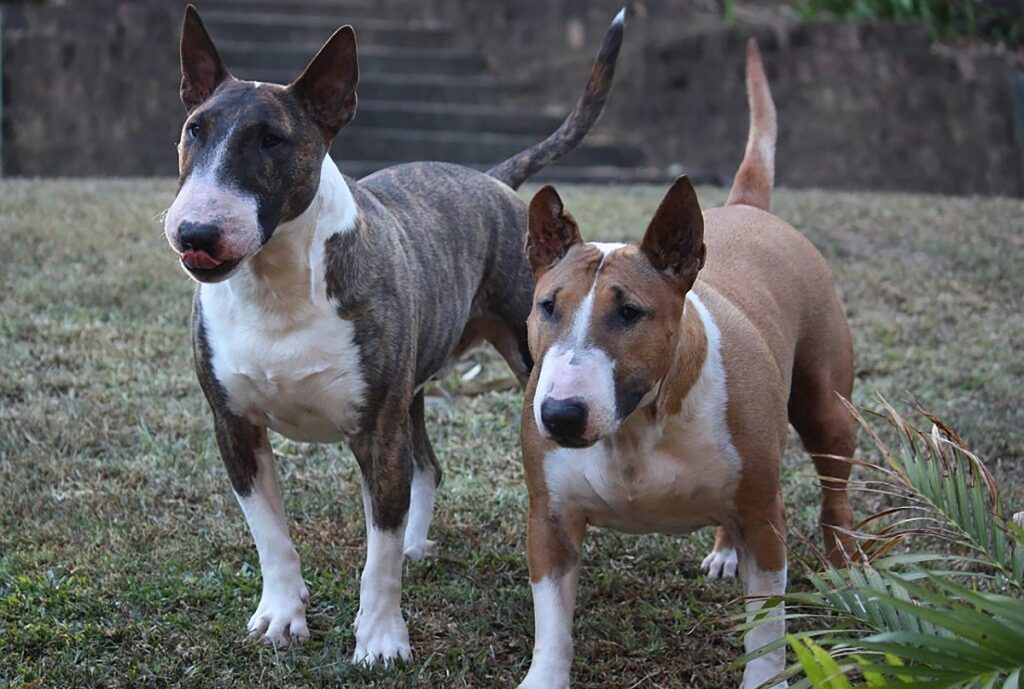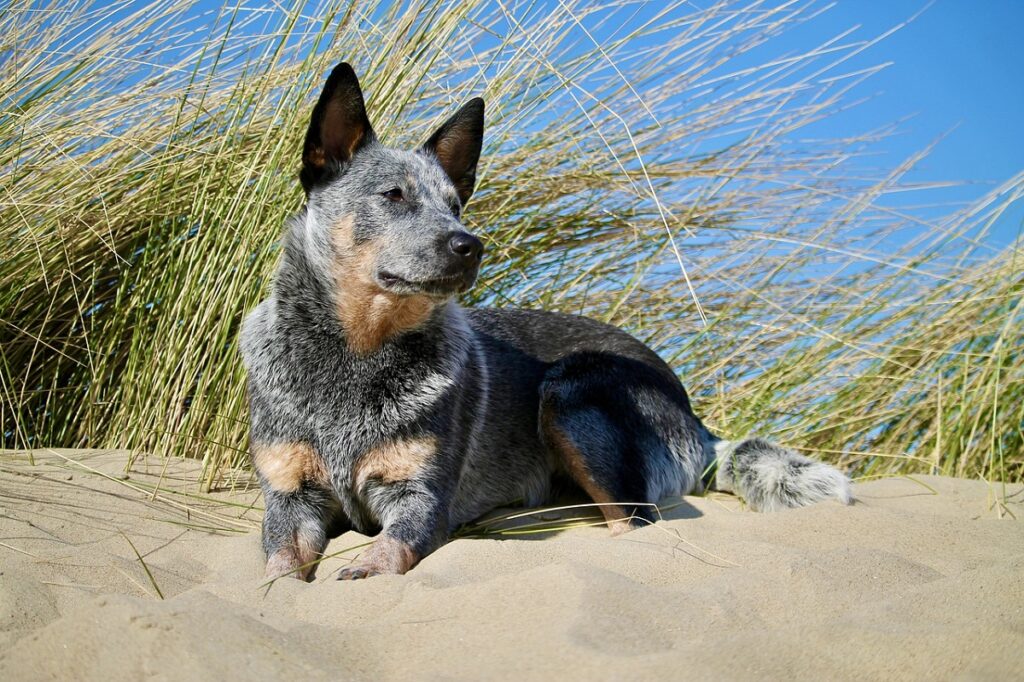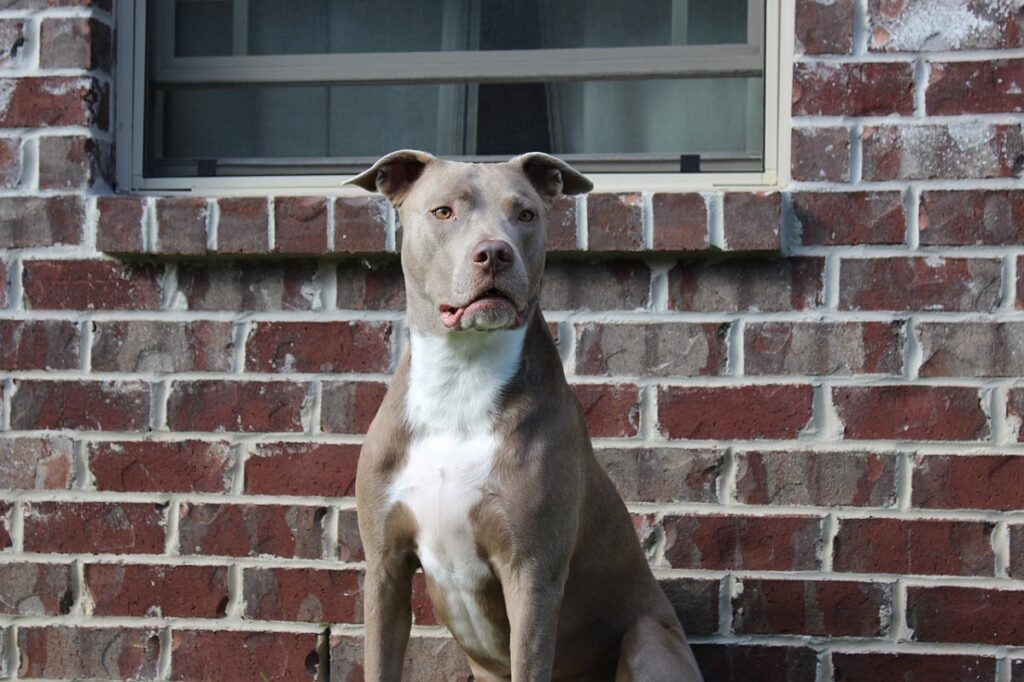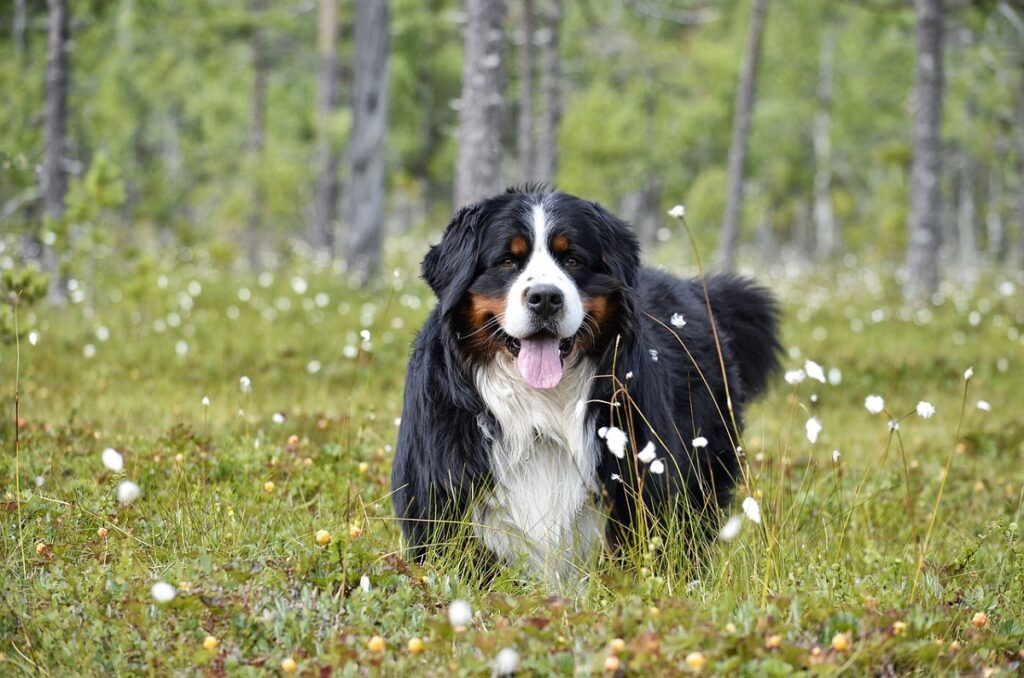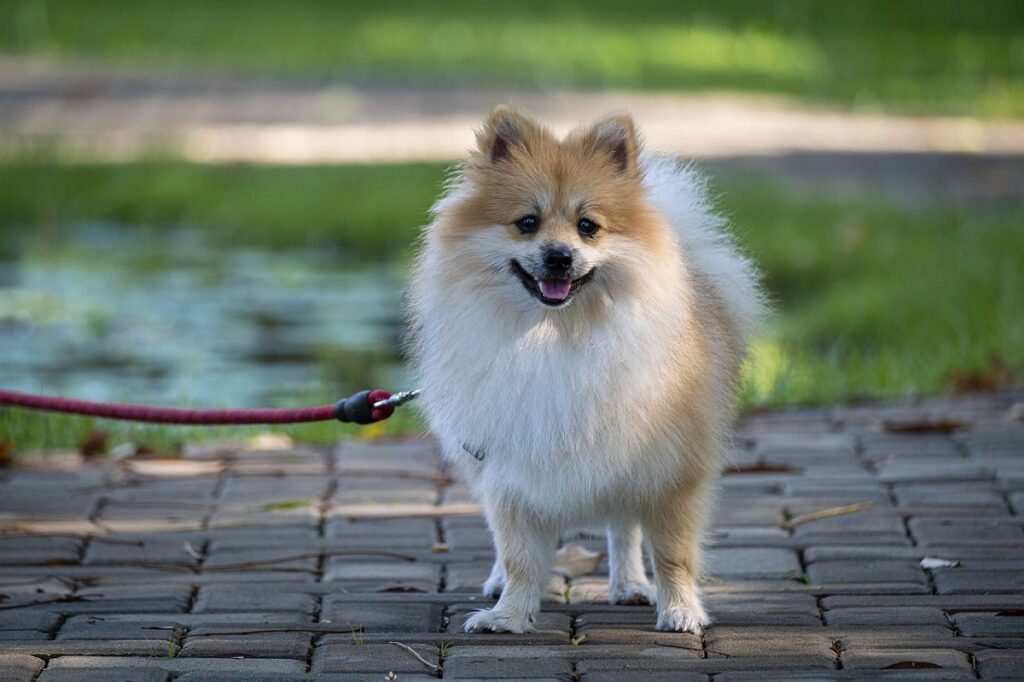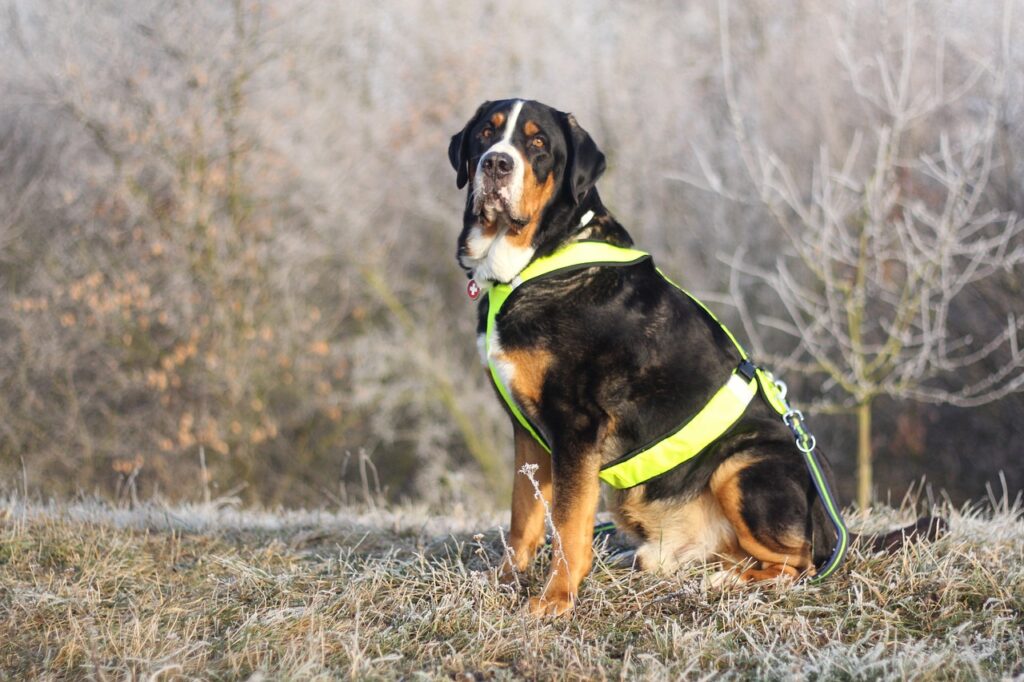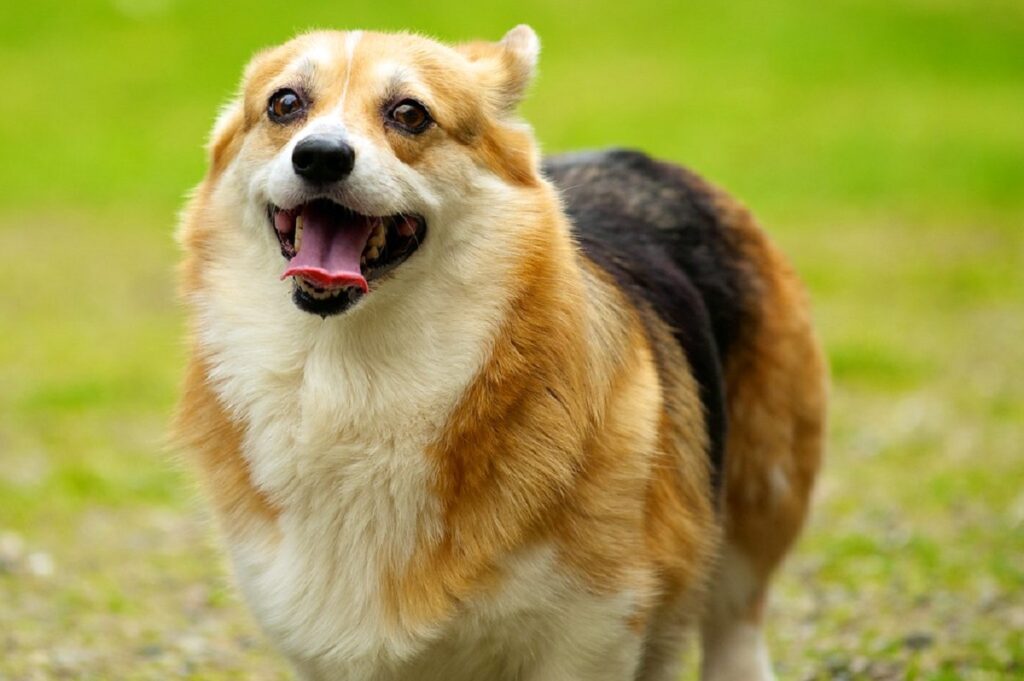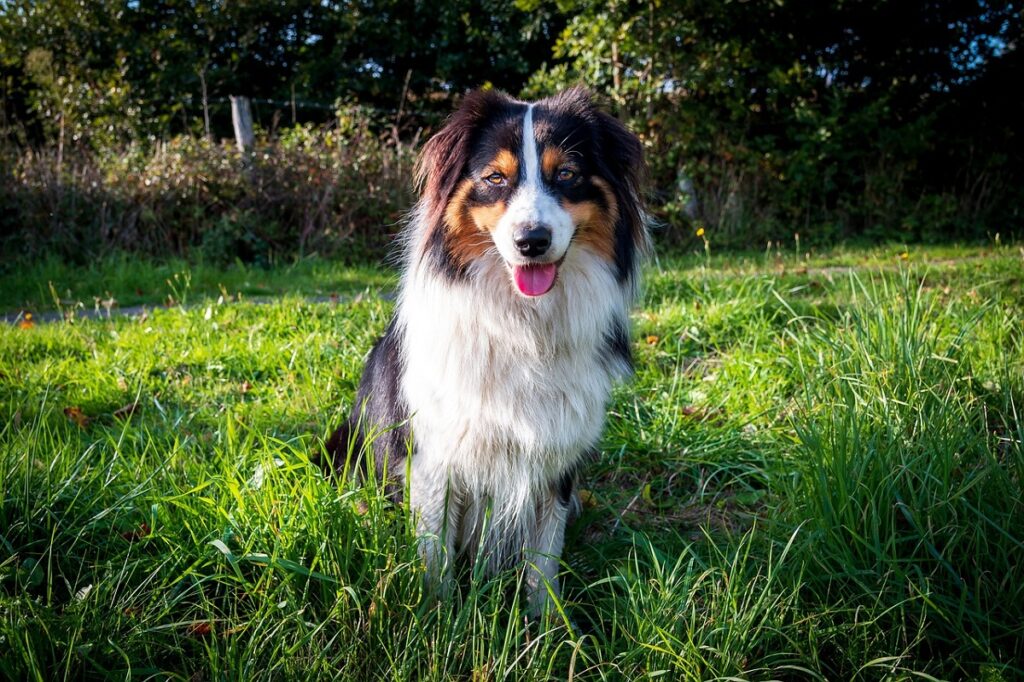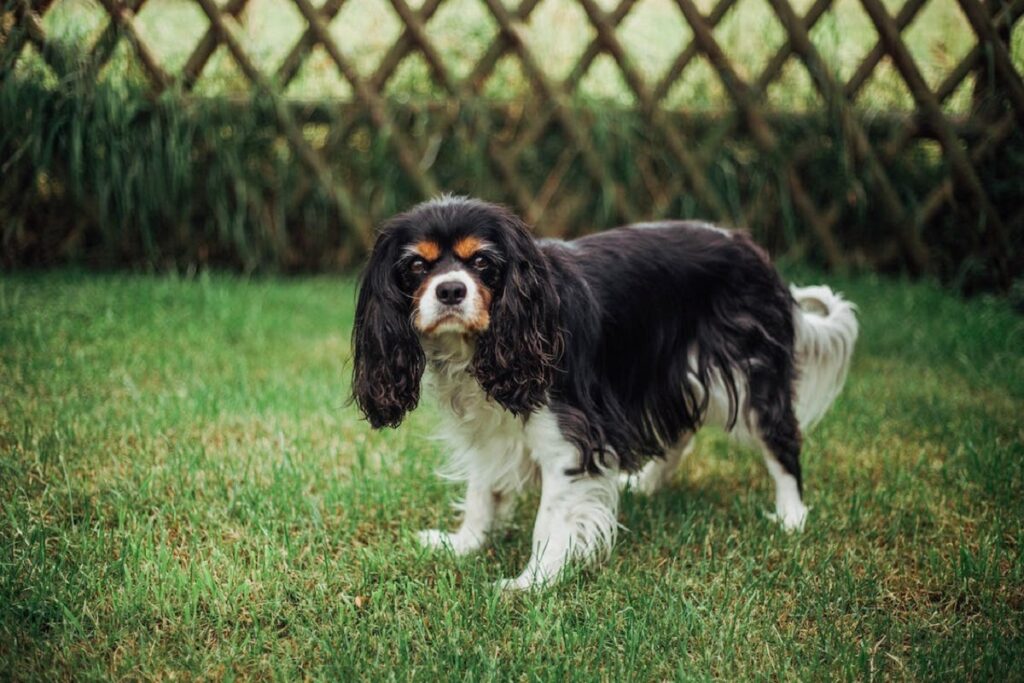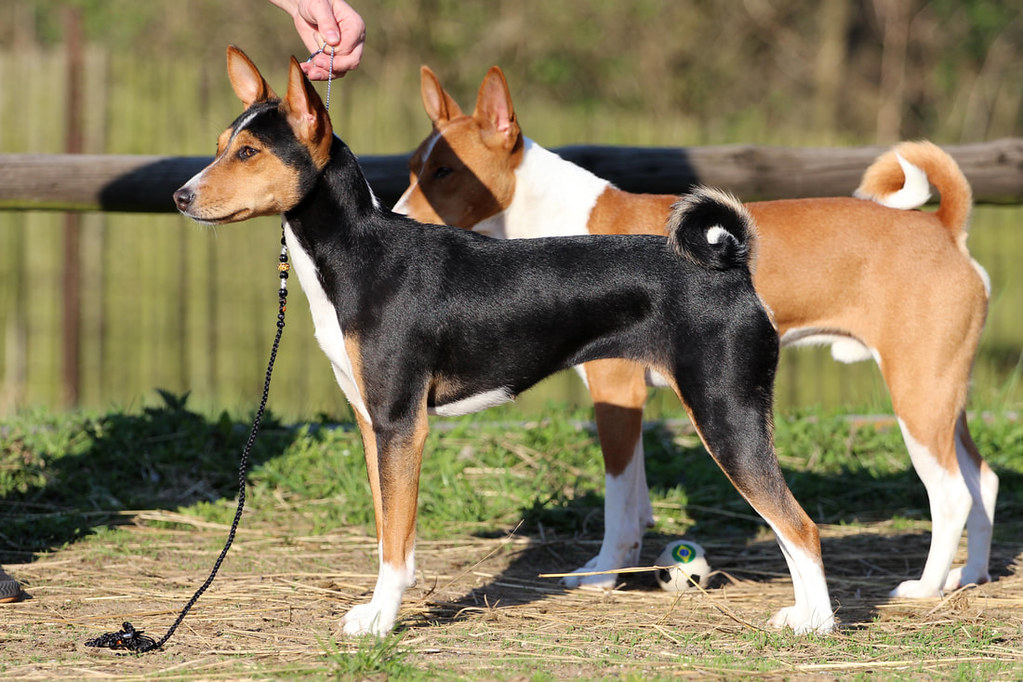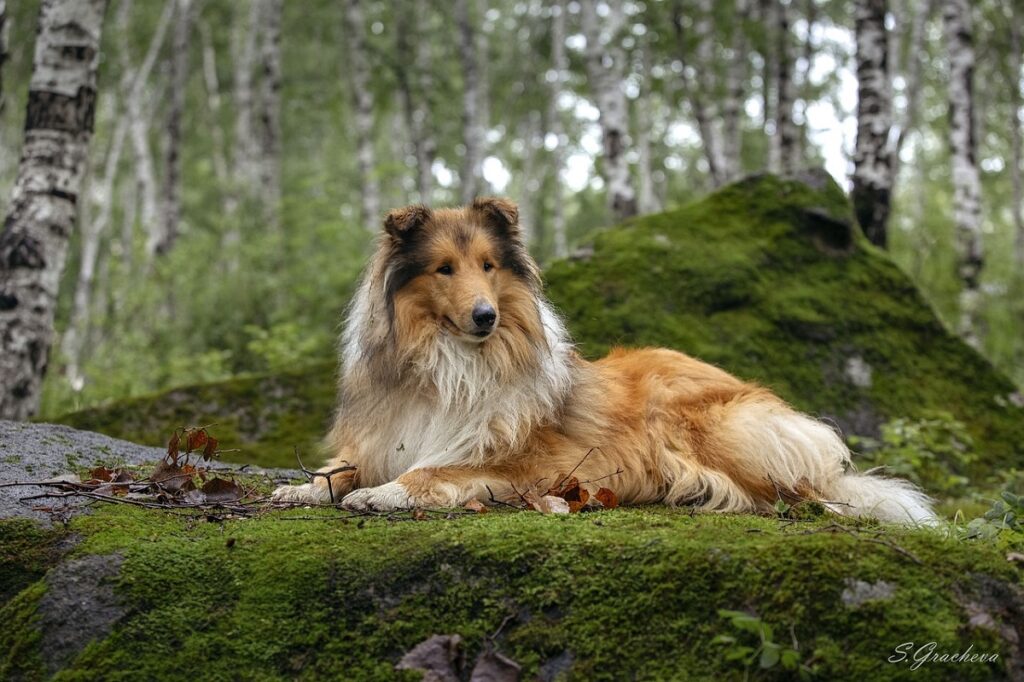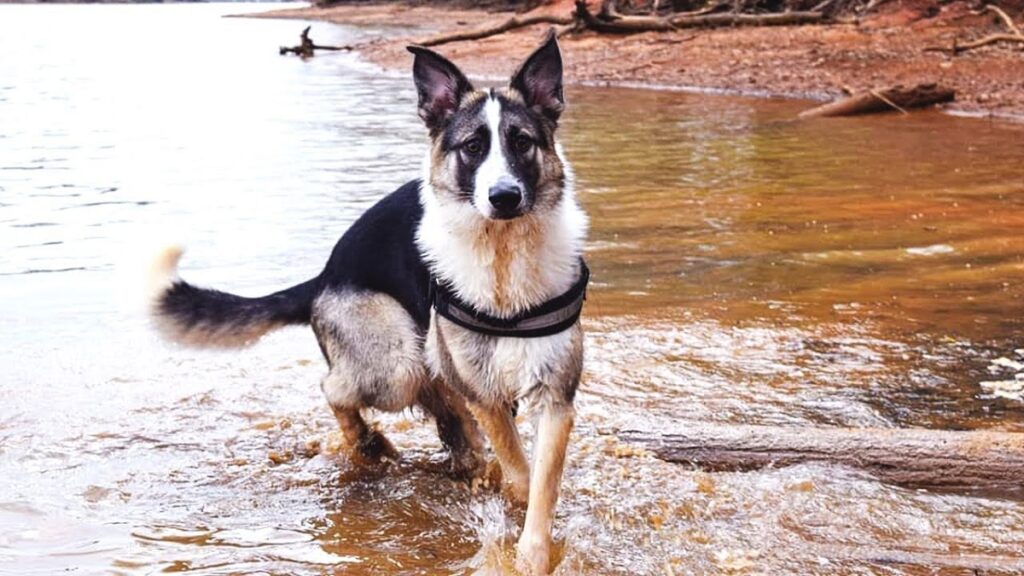Prepare to be mesmerized by a kaleidoscope of canine beauty! This article showcases 15 stunning tricolor dog breeds, each boasting a unique coat of three distinct colors. From the playful Beagle to the majestic Australian Shepherd, we’ll explore the fascinating variety within these tri-colored companions. Complete with captivating photos, this guide will help you appreciate the striking aesthetics and individual characteristics of these eye-catching breeds. Get ready to fall in love with these vibrant and captivating canines!
You might say tricolored dog breeds are just dogs with three colors, and they are, but there’s more to them than that. These canines are stunning in looks and temperament – A win-win for them and us.
There are solid-colored dogs like golden retrievers and Bichon Frises and bi-colored dogs like Rottweilers and Dachshunds. And then there are the stars of our show – tricolor dog breeds. Breeds from Beagles to Basenjis wear their colors beautifully.
They’re each unique, like fingerprints, and can delight those fortunate enough to see them. But these breeds are more than just eye candy.
Each of them has histories, interests, and innate characteristics that make them so fascinating. Come with us for a kaleidoscope ride of colors and patterns that will make you go, “Ooh!”
Tricolor Dog Breeds
There’s a lot of scientific data behind a tricolored dog breed. Genes, alleles, locus, and chromosomes can all swarm together to form what we know as colored dog breeds. But we wanted to keep it simple.
According to VCA Hospitals, multiple variations in canine coat color come from only two pigments. A dog’s genetics will determine what hue they become. We’re just so glad we get to be spectators of their beauty.
1. Entlebucher Mountain Dog
This Swiss herding breed, related to the Bernese mountain dogs, has coat colors of black, black white, and tan, or black white, and yellow. Their markings can be yellow, white, or brown. Just gorgeous. They’re independent workers and can move cattle on their own or under the command of their guardians.
They’re also people-dogs (and dog-dogs), loyal, and agile. Their endurance is off the charts, and if you adopt one, you’ll need to take long hikes, runs, or something else that really burns off their energy. This is part of the equation to keep them happy and healthy.
Their small-ish stature (16”-21”) helps them nip at the heels of cattle and stay protected from any backlash. They are known for their amazing tricolor coats developed by Swiss cattlemen. Of the four Alpine dogs bred, the greater Swiss mountain dog is the largest, and the Entlebucher is the smallest. This breed is double-coated, and they “blow” (shed) their coats twice yearly.
2. Beagle
The most popular hound dog in America is described by the American Kennel Club (AKC) as a breed that could have 10 possible mixes of tricolors. Wow. (Not to mention the 15 other possible colors, but that’s another article.)
They’re most recognized by their black, red, and white colors and have short, dense, double coats. This not only regulates their body temperature but protects them in thick brush as they hunt.
According to VCA, beagles have a piebald variant gene that results in a certain type of coloring associated with white markings that many other breeds have.
Hounds have the best scent capabilities of all dog breeds, and the beagle is no exception. They’re even used by the Department of Homeland Security to work in airports and are called the Beagle Brigade.
They were bred to hunt in packs and have white tips on their tails so they can be seen when their noses are to the ground.
3. Basset Hound
Speaking of fantastic scenthounds, this breed is “second nose” only to the Bloodhound. Bassets can carry the piebald gene as well. Their long ears fall all the way to the ground and scoop up scents, working similarly to funnels. They’re often top dog at:
- AKC Scent Work competitions
- Tracking
- Bassett Hound field trials
These wonderful dogs are going to bark. And bark. But they have a howl that is oddly comforting. Developed in ancient France, they are used mostly to hunt rabbits. With smooth, short, close, and double coats, they have eight possible tricolor combinations.
They don’t need a ton of exercise daily but do need a long walk daily. Basset hounds are heavy-boned with powerful legs and huge paws.
They were also bred to hunt in a pack and so enjoy the company of other canines. Just make sure you start them at a young age with obedience training and socialization.
4. Bull Terrier
As far as tricolor dog breeds go, the bull terrier is probably not the first one you think of with this characteristic. But they have five possible tricolor combinations, according to the AKC, as well as other possible colors.
They’re not fans of other dogs, in general, but early socialization with other canines could help them adjust. They don’t like to be left alone for long periods and might act out with unwanted behaviors if made to do so. (Sounds like some people I know.)
Their crowning glory is their football/egg-shaped heads. They’re friendly and gentle, highly intelligent, and open to meeting strangers.
Between their head shapes, coloring, and temperaments, this dog never fails to amaze.
5. Australian Cattle Dog
This is, in my humble opinion, the most beautiful tricolored dog breed in the dog kingdom. These 35-50 lb. canines are also known as the Queensland heeler, blue heeler, or red heeler.
With a short double-coat of blue-mottled, blue-speckled, red-mottled, red-speckled (or just blue), looking at their coats closely is like looking into a solar system. “They have high energy” is kind of an understatement. Their mentality is to move and work.
They’re descended from the dingo, and their work ethic is sublime.
According to Stanley Coren’s The Intelligence of Dogs, ACDs are rated as number ten out of 131 dog breeds for intelligence (obedience and command trainability).
6. Pit Bull
Similar to the bull terrier, you wouldn’t think any of the pit bull breeds were tricolored. They just normally don’t pop up in our minds that way. They have a single coat and can come in an array of colors. Tricolor pit bulls have three different and well-defined, not muddled, colors. The most common hues found in the tricolor pit bull are white, black, and brown.
The breeds of the pitbull family are often misunderstood, but in recent years, there has been a surge of advocates relaying just how special and affectionate these dogs are. They’re intelligent, loyal, and tender with their people.
7. Bernese Mountain Dog
This ancient breed, developed some 2,000 years ago, is often mentioned alongside its three “brother” Swiss mountain dogs: Appenzeller Sennenhund, Entlebucher Sennenhund, and the greater Swiss mountain dog. The BMD lived in the Canton of Bern in Switzerland, hence its name.
They’re large breeds and tri-colored dogs, but the Bernese is recognizable by its long hair. Naturally, they adore cold weather and wouldn’t flourish in hot climates. Among a few other colors, BMDs come in black rust and white, black tan, and white. FYI: They shed a ton.
These dogs get along with everyone… Kids, strangers, other dogs, adults… They just love to be around people.
8. Pomeranian
From the large Bernese to a 3-7 lb. dog, we’ll now talk about the adorable Pomeranian. These tiny dogs come in a range of many colors, almost two dozen, as well as tricolor. If they had another name, it would be “Poufball.” But that’s not scientific or anything.
These little guys are easily trained and spunky. They’re not the best dogs to be around young children since they can be easily harmed (accidentally), but you can train and socialize them early so they don’t become tiny terrors.
The Pom is named after Pomerania, an area that is now part of Poland and Germany. They’re related to the spitz-type, double-coated sled dogs of the Arctic. Just much smaller. They’re the smallest of the spitz breeds with a silky coat. They’re also called “Zergspitz” in some countries.
9. Greater Swiss Mountain Dog
These phenomenal dogs, with a black base coat with red and white markings, are considered to be the oldest of the four famous Swiss dog breeds. At 85-145 lbs, this tricolor breed is quite formidable. But they’re as affectionate with family members as they are large.
This dependable mountain breed is in the “Working” group of the AKC listings.
They adore kids and make incredible watchdogs partly due to their use as multi-purpose farm dogs. They excel at:
- Guarding livestock
- Herding
- Pulling carts
- Being incredible family companions
They contributed to the early development of the Rottie and the St. Bernard. Basically, they’re just big, sweet dogs who will have your back no matter what.
10. Pembroke Welsh Corgi
These double-coated dogs are long and low and agile and intelligent. Their AKC colors are black and tan, fawn, red, and/or sable with white coat pattern markings. PWCs have a short, thick undercoat and a coarser, longer outer coat.
Pembroke Welsh Corgis are independent and adventurous and can get into mischief if not properly exercised and socialized. Think long walks or short jogs since their little legs can’t handle more strenuous exercise.
More popular than the Cardigan Welsh Corgi, they were the favorite of Queen Elizabeth II, who surrounded herself with them.
They’re number thirteen on the AKC’s list of Most Popular Dog Breeds and were recognized by them in 1934.
11. Australian Shepherd
Okay, so I lied. Besides the Australian cattle dog (there must be something in the water over there), this breed also has one of my very favorite coat colors: Black, blue merle, red, or red merle, with white markings, tan points, or white markings and tan points. Note: “Merle” is mottled patches of color. They’re truly spectacular!
Their eyes can be a stunning blue, which only adds to their beauty. These are rodeo dogs originally bred for herding. If you’re not extremely active, this is not your dog, but if you’re a daily do-er of hiking or running, the Australian shepherd can be your greatest companion.
12. Cavalier King Charles Spaniel
First off, guardians of this breed are a little, let’s say, exuberant. There are clubs and Facebook groups all dedicated to this cutie-pie. They’re a 13-18 lb. dog of gentleness and affection.
Their dark, round eyes and soulful expression will pierce right through to your heart. They originated in England as companion animals, and they’ve done their job perfectly from the early to mid-1900s until today. Spaniels are active and intelligent and participate in dog sports like obedience competitions.
Their wavy, silky, medium-length hair can be Blenheim, black and tan, black and white, or ruby with tan markings. Note: “Blenheim” is the color name given to honor Blenheim Palace, where John Churchill, 1st Duke of Marlborough, had a hand in developing the Cavaliers’ ancestors.
13. Basenji
When I think of a Basenji, I think of two things: 1) They’re Africa’s “Barkless dog,” and 2) They can only be tan and white. But I was wrong on the second one. (It happens.) This breed can actually have a tricolored coat that comes in black tan and white, black brindle and white, blue cream and white, or mahogany tan and white with several types of markings.
These dogs look regal and sleek, and their posture is impeccable. Their curled-up-to-their-backs tail does give a look of juxtaposition though. They have a strong hunting instinct and often excel at canine sports like:
- Lure coursing
- Tracking
- Obedience
- Agility
Also, watch for them at conformation (dog) shows. They’re amazing.
14. Collie
Herding dogs, the Lassie dog is simply drop-dead gorgeous. The breed can come in four groups of tricolors, along with markings of black and tan, blue merle, sable, and sable merle.
The popular show that depicted the collie as an intelligent mindreader wasn’t a pipedream. These dogs are smart. “Collie” is a Scottish word used to describe sheepdogs and these herders do their jobs extremely well.
There are two types of collies – rough and smooth – and the “rough” is the one you probably picture in your mind. (There’s also the bearded collie and the border collie, which are two different breeds in their own right.)
15. Panda Shepherd
Panda German shepherds are a type of German shepherd with white spotting. This is caused by a rare genetic mutation that results in spotting that can take different forms. They can be a myriad of tricolors and are piebald.
They’re ridiculously strong, and their ears are everything. The panda pattern was a mutation that first appeared in October 2000.
This breed type is rare, and surprisingly, those with the panda gene are purebred. This gene only affects their color, not their temperaments. They’re active and need lots of daily exercise to the tune of about two hours a day.
FAQs
Which Breed Is a Tri-Colored Drafting Dog?
- Bernese mountain dog
- Greater Swiss mountain dog
- Entlebucher Mountain Dog
- Appenzeller Sennenhund
What Makes a Dog a Tri-Color?
A tricolored dog has three distinct colors due to its genetics.
Conclusion
So, do you want a tricolored breed now? We (always) suggest adopting rather than buying, so look for a breed-specific rescue or look at your local shelter.
“Beauty” is in these dogs’ genes, and you’ll never go wrong with one of these breeds as a companion. Unless you’re a couch potato!
The world of tricolor dog breeds offers a stunning array of coat patterns and personalities. From the playful Beagle to the dignified Bernese Mountain Dog, these dogs showcase the captivating beauty of this three-color combination. While coat color shouldn’t be the sole factor in choosing a pet, appreciating the unique aesthetics of these breeds adds another layer to the joys of dog ownership. Ultimately, the best tricolor breed for you depends on your lifestyle and preferences, but exploring their diverse characteristics can guide you toward a fulfilling companionship.

